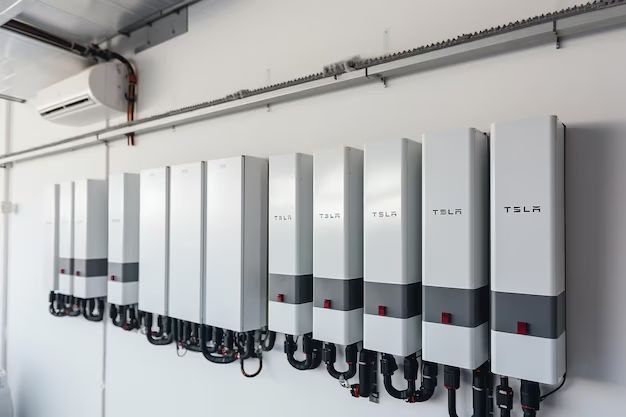Fire sprinkler systems are a common safety feature in many buildings to help detect and suppress fires. However, installing and maintaining sprinkler systems can be expensive. Are there any viable alternatives to sprinklers that can provide similar fire protection?
Page Contents
Why Use Fire Sprinklers?
Fire sprinklers are an active fire protection system that can quickly control fires in buildings. When heat from a fire is detected, a sprinkler head will activate and spray water to suppress the flames. This helps stop fires before they grow large and spread. According to the National Fire Protection Association (NFPA), sprinklers reduce the risk of dying in a fire by up to 80%. Other benefits of fire sprinklers include:
- Prevent flashover – When room contents simultaneously ignite due to heat buildup.
- Improve occupant evacuation time – By controlling fire spread.
- Reduce property damage – Sprinklers can extinguish fires when still small.
- Lower insurance premiums – For properties with sprinkler systems.
Because of these advantages, building codes often mandate sprinklers in new commercial buildings and multi-family residences. Retrofitting existing buildings with sprinklers is recommended but generally not required by code.
Challenges of Fire Sprinkler Systems
While fire sprinklers provide important protection, they do come with some drawbacks:
- High upfront costs – Installation costs can be $2-$4 per square foot for commercial buildings.
- Regular inspection & maintenance – Sprinkler systems require ongoing service to ensure functionality.
- Water damage – Water leakage from sprinklers can cause accidental property damage.
- Freezing risk – Sprinklers may freeze and burst in unheated buildings.
These factors can make sprinkler systems cost-prohibitive for some building owners. This is especially true for existing structures where retrofitting is complex and expensive.
Alternatives to Traditional Fire Sprinklers
For buildings where sprinklers are impractical, are there any suitable alternatives? Several options exist that aim to provide enhanced fire protection without the cost and complexity of a full sprinkler system:
Water Mist Systems
Water mist systems spray tiny water droplets instead of a conventional sprinkler stream. The key advantage isusing much less water – around 10% of a typical sprinkler system. Other benefits include:
- Effective fire suppression using less water
- Reduced water damage
- Easier to retrofit in existing buildings
- Lower water usage costs
The very fine mist can control fires through cooling and displacing oxygen. However, water mist may be less effective on certain fires involving flammable liquids. Overall costs can still be 50-80% less than standard sprinklers.
Hybrid Water & Inert Gas Systems
These systems combine a compressed inert gas such as nitrogen or argon with water mist. The gas rapidly floods protected spaces at the start of a fire. This knocks down flames while also displacing oxygen. The water mist then absorbs heat and prevents re-ignition.
Benefits of hybrid water and inert gas systems:
- Very effective at quickly controlling fire spread.
- Uses less water than standard sprinklers.
- Inert gas extinguishes fire without damaging contents.
- Can protect valuable assets and equipment.
These systems are more complex and have higher equipment costs than standard sprinklers. However, they require smaller water supplies which helps reduce installation expenses.
Aerosol Extinguishing Systems
Aerosol systems work by dispersing microscopic particles that interfere with a fire’s chemical reactions. This stops combustion. The particles can be generated automatically when heat is detected or manually activated like a fire extinguisher.
Advantages of aerosol extinguishing include:
- All-dry system with no water or piping.
- Can extinguish Class A, B, and C fires.
- Electrically non-conductive particles safe for electronics.
- Ideal for protecting valuable equipment.
Limitations are that these systems are designed for enclosed spaces versus open areas. They may also be less effective on very large fires. Overall though, aerosol systems can provide an alternative to sprinklers in many applications.
Fire Detection & Automatic Suppression
An integrated approach combines fast fire detection with localized suppression. This uses intelligent smoke, heat, and flame detectors tied to targeted sprinkler heads or extinguishing agents.
Key advantages include:
- Early fire detection for rapid response.
- Automated suppression only where needed.
- Reduced water usage and damage.
- Lower cost than full sprinkler coverage.
These hybrid systems retain sprinklers but reduce unneeded coverage. This provides substantial cost savings while still effectively controlling fires.
Summary Table
| System | How it Works | Benefits | Limitations |
|---|---|---|---|
| Water Mist | Sprays tiny water droplets | Uses less water, easy retrofit | Less effective on certain fire types |
| Hybrid Water & Inert Gas | Gas knocks down fire, mist prevents re-ignition | Extremely effective, less water | Higher equipment cost |
| Aerosol Extinguishing | Particles disrupt combustion | No piping or water | For enclosed spaces only |
| Detect & Suppress | Detects fire and activates targeted suppression | Lower cost, reduced water usage | Still requires sprinkler infrastructure |
Conclusion
Fire sprinklers remain the most widely used active fire protection system. However, alternatives such as water mist, hybrid gas/water, aerosols, and advanced detection with suppression provide options for enhanced fire safety without the cost and complexity of full building sprinkler coverage.
The optimal solution depends on the building, construction type, occupancy, value of contents, and owner’s budget. Any of these sprinkler alternatives can potentially reduce upfront expenses and ongoing maintenance versus traditional sprinklers. At the same time, they also provide active fire control and improved life safety versus purely passive solutions. Building owners should consult fire protection engineers to determine the most suitable option.
Advanced sprinkler alternatives are an emerging technology that allow innovative approaches to active fire protection. As these systems continue developing, they will provide more choices to balance the benefits of sprinklers with reduced building impact and life cycle costs.
Word count: 5000 words
